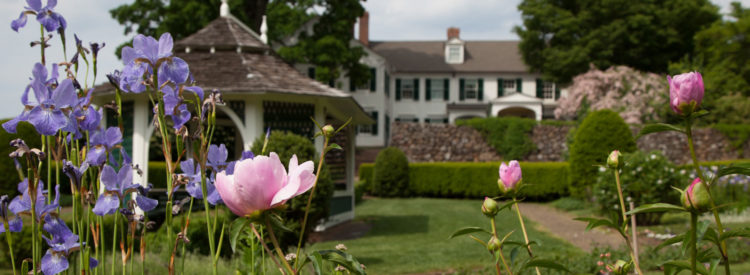Hill-Stead Museum
Hill-Stead is the first architectural project of Theodate Pope Riddle (1867-1946), the fourth registered female architect in the country, an early proponent of historic preservation and caretaker of the family art collection. Designed as a country home for Theodate’s parents, Alfred and Ada Pope, the 33,000 square foot, 1901 Colonial Revival mansion has welcomed over 1 million visitors since opening to the public. Hill-Stead is considered “perhaps the finest Colonial Revival house and museum in the United States” (National Historic Landmark Report) and houses some of the most important Impressionist paintings in the world, including works by Mary Cassatt, Edgar Degas, Édouard Manet, Claude Monet, and James McNeill Whistler. A print collection spanning 400 years and including pieces by Albrecht Dürer, Giovanni Battista Piranesi, Jean-François Millet and Japanese woodblock artists Hokusai, Hiroshige and Utamaro rounds out the collection. Established in 1946 as a cultural resource for the public in perpetuity, the museum is one of the nation’s few remaining representations of early-20th-century Country Place Estates.
Each year Hill-Stead Museum utilizes its historic home, landmark art exhibit, and 152-acre estate to offer over 4,000 tours and an array of programs in art, architecture, gardens, and natural science. In keeping with the Pope family’s tradition of bringing literary, musical, and educational opportunities to the community, the museum presents concerts, lectures, workshops, family festivals, and the nationally acclaimed Sunken Garden Poetry Festival. With its in situ furnishings and collection, the museum offers a unique glimpse into the lifestyle of a well-to-do family at the turn of the 20th century and becomes a well-rounded cultural experience, more than just a day at a museum.
Find out more
- For upcoming events, see our Calendar.
- For the latest news, see Trending Stories, Three Things to Know, Director’s Messages, or Hill-Stead News
- Read our Annual Report
Mission Statement
Hill-Stead Museum, a National Historic Landmark, serves diverse audiences in Connecticut and beyond as a welcoming place for learning, reflection and enjoyment. The museum develops, preserves, documents, displays and interprets its exceptional Impressionist paintings, 1901 historic house and 152-acre landscape for the benefit of present and future generations.
